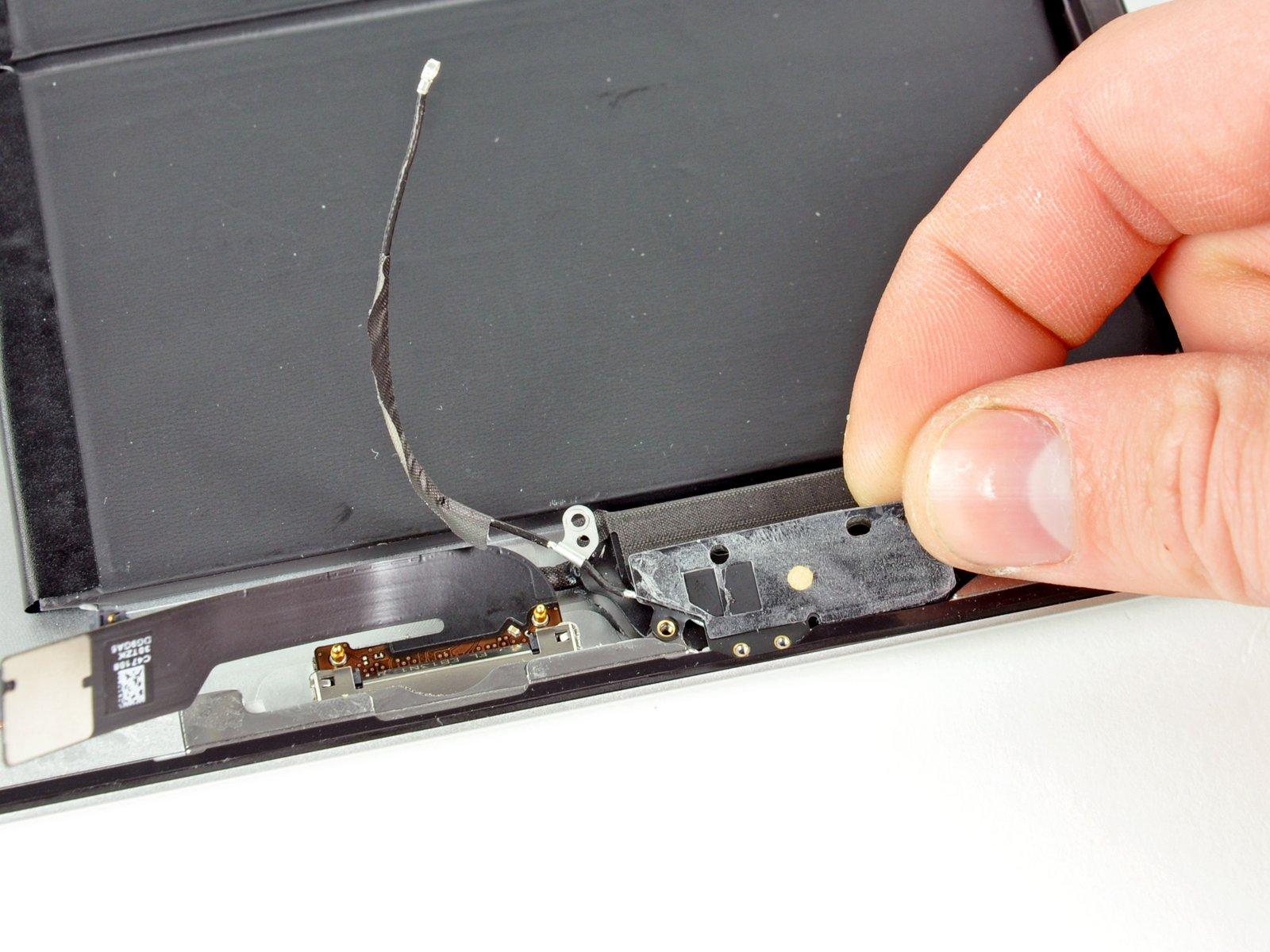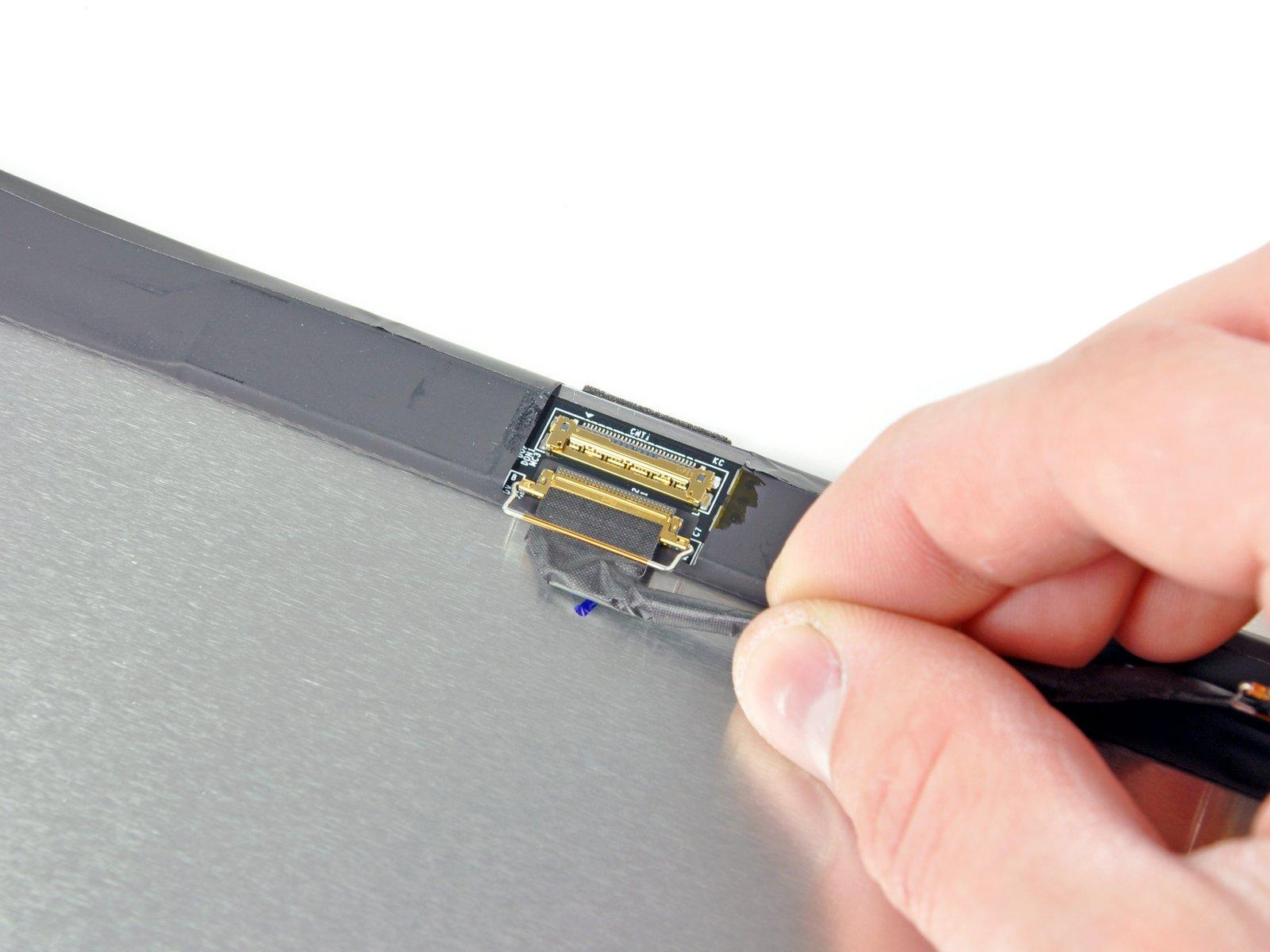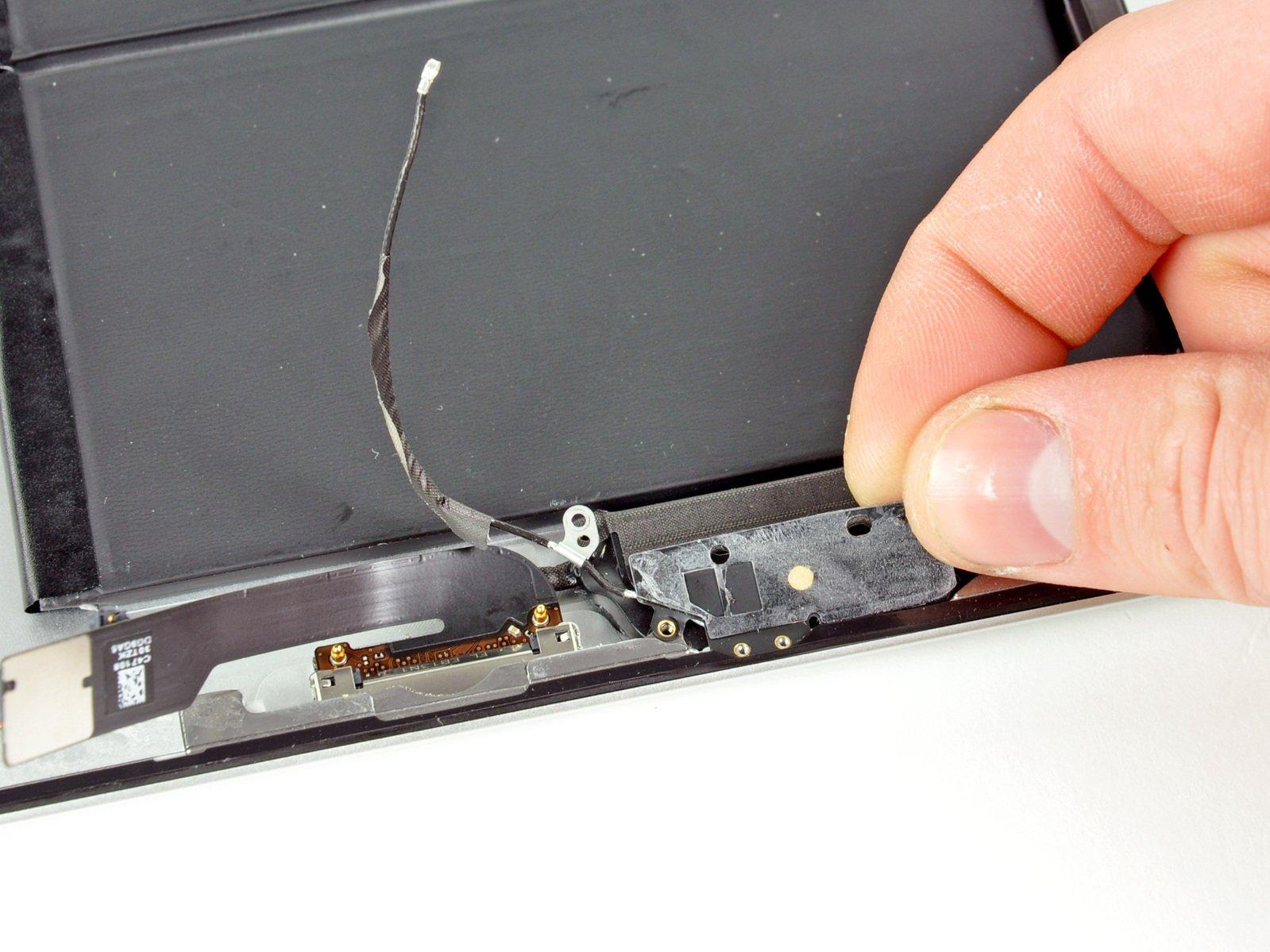How to Replace iPad Wi-Fi Headphone Jack Board Tutorial
Duration: 45 minutes
Steps: 48 Steps
Hey there, savvy fixer! Just a friendly reminder: take it easy and double-check everything as you go along. If you hit a snag or need a little extra support, remember you can always schedule a repair. You’ve got this!
Ready to bring your tunes back to life? Follow this guide to swap out the Headphone Jack Board and get your audio groove on again! If you need help, you can always schedule a repair.
Step 1
It’s a great idea to give your microwave a little scrub before diving in. That pesky gunk on the bottom might just hitch a ride on the iOpener, and nobody wants that!
– Pop the iOpener right in the middle of the microwave like it’s the star of the show.
Tools Used
Step 2
Hey there, just a friendly reminder to keep an eye on that iOpener during your repair adventure! If it gets too hot, it might just surprise you with a burst. Aim to keep it under 100˚C (212˚F) for a smooth ride.
And remember, if the iOpener looks a bit puffy, it’s best to give it some space.
If it’s still feeling a little too toasty in the middle for your fingers, no worries! Just keep using it until it cools down a bit more before you heat it up again. A well-heated iOpener should stay cozy for up to 10 minutes!
– Give that iOpener a warm-up in the microwave for thirty seconds.
– As you work through the repair, keep an eye on the iOpener; when it starts to cool down, pop it back in the microwave for another thirty seconds to keep things toasty.
Tools Used
Step 3
Careful there! The iOpener is going to be quite toasty, so handle it with care. An oven mitt might just be your new best friend for this one!
– Carefully take the iOpener out of the microwave, making sure to grab it by one of the flat ends to steer clear of the toasty center.
Tools Used
Step 4
No microwave? No problem! Just pop your iOpener into a pot of boiling water to get it nice and warm.
– Grab a pot or pan and fill it up with enough water to give that iOpener a nice, cozy bath.
– Bring the water to a rolling boil, then go ahead and turn off the heat – we don’t want any surprises!
– Now, gently place your iOpener into the warm water for about 2-3 minutes. Just make sure it’s getting that full soak!
– Time to get your tongs out! Carefully fish out the hot iOpener from the water.
– Give the iOpener a good towel dry – we want it to be nice and ready for action.
– And voilà! Your iOpener is all set for use! If you find it needs a little more warmth, just repeat the process: heat the water to a boil, turn off the heat, and let it enjoy another 2-3 minute soak.
Tools Used
Step 5
Put on those stylish safety glasses to keep your peepers safe, and watch out for that LCD screen – we want it in one piece!
– If your display glass has taken a hit, let’s keep things safe and sound! Start by applying some tape to the glass to prevent further shattering and keep yourself out of harm’s way during the repair.
– Next, grab some clear packing tape and lay it down in overlapping strips over the iPad’s display until it’s completely covered. Think of it as giving your device a protective blanket!
– Now, follow the rest of the guide as closely as you can. Just a heads up: once the glass starts to crack, it might keep on cracking a bit while you work. If that happens, don’t sweat it! You may need to use a metal prying tool to gently scoop out the broken glass.
Step 6
Just a friendly reminder: while you’re getting into this repair groove, keep those safety glasses on! Nobody wants to deal with unexpected glass confetti. Stay safe and focused, and if you find yourself in a pickle, you can always schedule a repair.
– Place the iOpener flat against the right edge of your iPad, giving it a little love by ensuring it makes good contact with the surface. Smooth it out for a snug fit!
– Now, let the bag chill on the iPad for about 90 seconds. This will help warm things up nicely before you go ahead and open the front panel.
Tools Used
Step 7
Getting that wedged tip of the opening tool between the glass and plastic might take a bit of muscle! Just take your time and be gentle—wiggle the plastic opening tool back and forth as needed. You’ve got this!
– Check out that little gap in the iPad’s adhesive ring located in the upper right corner—it’s about 2.0 inches (~5 cm) down from the top. That’s your cue to get started!
– Now, grab your tool and line it up with the mute button. Gently slide the tip of a plastic opening tool into that gap between the front glass and the plastic bezel. Just get the very tip in there, enough to give that crack a little nudge.
Step 9
– With the plastic opening tool firmly positioned between the front glass and the plastic bezel, gently slide a plastic opening pick into the gap right beside the tool. You’re doing great—keep it steady!
Step 10
– Take the plastic opening tool out of the iPad, and gently slide the opening pick further under the front glass, going about 0.5 inches deep. You’ve got this!
Step 12
The adhesive is super strong, so you might need to put in a little muscle. Just take your time and be gentle with it!
If you can spot the tip of the opening pick peeking out from under the front glass, give it a gentle tug. Don’t worry, using the pick this deep won’t hurt anything, but it might leave a bit of sticky residue on the LCD. Just keep it cool and carry on!
– As the bottom edge soaks up some warmth from the iOpener, let’s start peeling away that adhesive from the right edge of your iPad.
– Gently slide the opening pick down the edge of the iPad, making sure to release the adhesive as you go. You’ve got this!
Tools Used
Step 13
You might find it helpful to slide that warm iOpener back onto the right edge of your iPad as you peel away the adhesive. The timing here depends on how long your iPad has been cooling off while you’ve been busy working your magic.
– If your opening pick gets a bit too cozy with the adhesive, give it a gentle ‘roll’ along the edge of the iPad to keep freeing that sticky stuff. You’ve got this!
Tools Used
Step 14
– Before you dive in and remove that first opening pick from the bottom corner of the iPad, pop a second pick under the right edge of the front glass to keep that sticky adhesive from getting cozy again.
– Give your iOpener a little reheat love, then slide it over to the top edge of the iPad.
Tools Used
Step 15
The Wi-Fi antenna is nestled at the bottom right corner of the rear case of the iPad, securely fastened with screws and a cable. Because of its unique positioning, it’s super important to tread lightly during this process—otherwise, you might end up causing some irreversible mischief to that Wi-Fi antenna.
– Alright, friends, it’s time to tread carefully over the next few steps!
– You’ll need to gently detach the adhesive holding the antenna to the front panel. Just be super careful not to harm those delicate connections linking the antenna to the bottom of the iPad. Follow along closely, and you’ve got this!
Step 16
Hey there! Just a quick heads up: don’t slide that pick too far down to the bottom right corner. You might accidentally tickle the Wi-Fi antenna, and we wouldn’t want that!
– Gently slide the opening pick around the bottom right corner of your iPad to free that stubborn adhesive. You’ve got this!
Step 17
As you glide that opening pick along the bottom right edge of the front panel, keep an eye out! The Wi-Fi antenna is lurking close to the corner and can easily get snipped if the adhesive doesn’t cooperate. Let’s keep it safe and sound!
Just a little tip: don’t pull that pick all the way out from under the front glass! Keep about 1/8″ (3 mm) of it snugly tucked underneath. You’ve got this!
– Gently glide the tip of the opening pick along the bottom edge of your iPad, freeing up that adhesive over the Wi-Fi antenna like a pro!
Step 18
– Alright, you’re doing great! Once you’ve made your way past the Wi-Fi antenna—about 3 inches (75 mm) from the right edge or right next to that home button—go ahead and slide that opening pick back in all the way.
– Now, gently slide the pick to the right and let the adhesive that’s holding the Wi-Fi antenna to the front glass release. Easy peasy!
Step 19
Keep the iOpener’s heating sessions to a minute max, and give it a cool-down break of at least two minutes before you heat it up again. Your device will thank you for the patience!
– Keep easing the adhesive away from the bottom of the iPad, and gently pull the opening pick out enough to wrap around the home button. Once you’ve passed the home button, pop that pick back in to about a half inch (10 mm) deep. You’re doing great!
Tools Used
Step 20
– Keep that adhesive coming! Slide it along the bottom edge of the iPad until it’s all released.
– Now, pop in the opening pick right under the front glass near the home button and leave it there for some extra support.
Step 22
If your adhesive has cooled down a bit too much, just pop that iOpener back along the top edge and keep going! And if the iOpener itself is feeling a bit chilly, give it another heat-up and get back to work.
– Gently glide the opening pick along the top edge of your iPad, giving it a little tug to maneuver around the front-facing camera bracket.
– The adhesive in this area is pretty strong, so you might need to apply a bit of muscle. Just take it slow and steady to avoid any slips that could lead to mishaps with your iPad.
– If the opening pick feels like it’s stuck in the sticky stuff, try ‘rolling’ it as demonstrated in step 9.
Tools Used
Step 23
If the adhesive is nice and toasty, feel free to lift the iOpener off your iPad for easier access. But if it’s still a bit clingy, give the iOpener another warm-up and place it on the left edge while you dive into your work.
– Keep peeling back that adhesive at the top edge of your iPad, and slide the opening pick around the top left corner with confidence!
Tools Used
Step 24
The digitizer cable is hanging out about 2 inches (50 mm) from the bottom of your iPad. When you’re about 2.25 inches (60 mm) from the bottom, it’s time to pause the pick sliding action. You’ve got this!
– Gently glide the opening pick down the left side of your iPad, peeling back that stubborn adhesive as you go. Don’t worry, it’s a bit thinner here thanks to the digitizer hanging out along the whole left edge. Just keep the pick shallow (no more than 1/2 inch or 10 mm) to avoid any mishaps with the digitizer. You’ve got this!
Step 25
Be super careful! The bottom of the digitizer cable is just about 1″ (25 mm) from the iPad’s bottom. Take your time and work gently to avoid accidentally cutting this cable.
– With your trusty opening pick still tucked under the bottom edge of your iPad, gently coax the adhesive away from the bottom left corner. You’ve got this!
Step 26
– With one of those handy opening picks, gently lift up the bottom right corner of your iPad and give it a little pinch with your fingers.
Step 27
Watch out for any sticky stuff that might still be hanging on! Grab an opening pick and gently slice through any adhesive still keeping the front panel in place. You’ve got this!
– Grab your iPad by the top and bottom right corners, and give that front glass a gentle twist away from the device. It’s like a little dance move, but with your tech!
– When you’re putting everything back together, take a moment to use a microfiber cloth and some compressed air to wipe away any pesky dust or fingerprints on the LCD. Your iPad deserves to shine before you seal it up!
Step 28
– Let’s get started! First up, take out those four 2 mm Phillips #00 screws that are holding the LCD snugly against the aluminum frame. You’ve got this!
Step 29
– Grab your trusty plastic opening tool or spudger and gently lift the right edge of the LCD out of the iPad. You’ve got this!
– Now, swing that LCD around on its left edge and let it rest on the front panel like it’s taking a well-deserved break.
Tools Used
Step 30
– Grab the spudger and gently lift the piece of tape that’s holding down the LCD ribbon cable connector. You’re on the right track!
Tools Used
Step 31
– Gently lift the retaining flap on the LCD ribbon cable ZIF connector. You’ve got this!
– With a little finesse, either use your fingers or grab a pair of tweezers to carefully pull the LCD ribbon cable out of its cozy socket on the logic board.
Step 32
– Gently lift the LCD away from the front panel without putting your fingers on the screen. You’ve got this!
Step 33
If needed, gently lift the tape that’s holding the digitizer ribbon cable snugly against the logic board.
– Lift the retaining flap on both of the digitizer ribbon cable ZIF connectors. You’ve got this!
Step 34
– Grab that trusty spudger and gently nudge the adhesive holding the digitizer ribbon cable in place. It’s like giving it a little wake-up call!
– Now, with the utmost care, pull the digitizer ribbon cable straight out from its cozy home on the logic board. Easy does it!
Tools Used
Step 35
– Gently lift the digitizer ribbon cable and grab your trusty spudger to carefully loosen the adhesive that’s keeping the cable snug against the rear aluminum case. You’ve got this!
Tools Used
Step 36
– With a gentle touch, coax the digitizer ribbon cable out of its snug spot in the aluminum frame.
– Carefully detach the front panel from the iPad, as if you’re unveiling a surprise gift!
Step 37
– Gently peel back that pesky electrical tape hiding the headphone jack assembly cable connector. It’s like unwrapping a surprise!
– Now, grab your trusty spudger and carefully flip up the retaining flap on both ZIF connectors holding the headphone jack cable to the logic board. You’ve got this!
Tools Used
Step 38
– Gently slide the flat end of a spudger under the headphone jack assembly cable to break free the adhesive that’s holding it tight to the rear aluminum frame. Easy does it!
– Once it’s loose, simply pull the headphone jack assembly cable straight out of its cozy socket on the logic board. You’ve got this!
Tools Used
Step 39
– Carefully peel away the adhesive tape that’s keeping the headphone jack assembly snug and secure.
Step 40
– Grab your trusty spudger and gently pry that front-facing camera connector away from its cozy little home on the headphone jack assembly.
– Now, slide that spudger to the right and watch the adhesive holding the camera cable give way. Easy peasy!
Tools Used
Step 42
– Gently slide the spudger’s tip under the microphone ribbon cable to gracefully detach it from its ZIF connector.
– Now, give that spudger a little slide to the left to break the adhesive bond between the microphone ribbon cable and the headphone jack assembly.
Tools Used
Step 43
– Gently lift the retaining flap that holds the volume/power button ribbon cable connector to the headphone jack assembly board. You’ve got this!
– Carefully unplug the volume button ribbon cable from its ZIF connector. Easy peasy!
Step 44
– Unscrew the screws holding the headphone jack assembly in place and set them aside like little treasures!
Step 45
– Carefully lift the headphone jack assembly ribbon cable away from the foam pad located in the top left corner of the rear case.
– If it’s giving you a hard time, feel free to use the flat end of a spudger to gently loosen any sticky adhesive holding the ribbon cable to the foam.
Tools Used
Step 46
– With a firm grip on the headphone jack assembly, gently tug it away from the iPad while being careful of any cables that might be in the way. Keep it cool and steady!
Step 47
– Grab your trusty spudger and gently slide the flat end underneath the rear-facing camera. Give it a little nudge to pop it out of its cozy spot on the underside of the headphone jack assembly board. Easy peasy!
Tools Used
Step 48
– The headphone jack board is still in place. Let’s tackle this together!





































































































